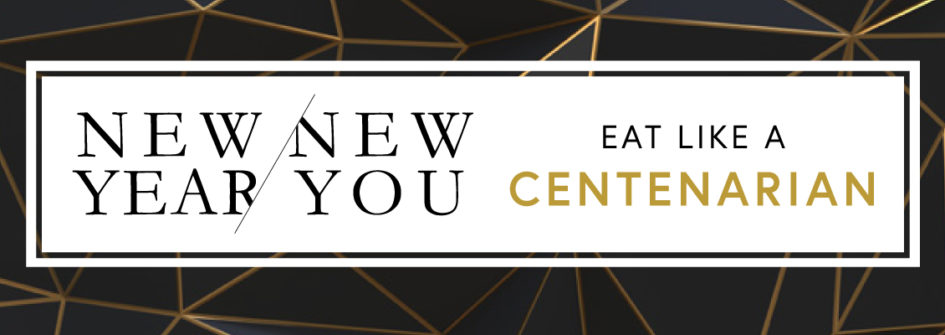Across the world, several communities are known as blue zones or a set of characteristics that have produced the world’s longest-lived people. Many live to a healthy 100 because their surroundings nudge them to practice the healthiest behaviors: moderate exercise, stress management, social connection and eating well. While each blue zone eats different regionally-based foods, they have many commonalities that contribute to their health and longevity. If you want to live to a healthy 100, include the following tips in your diet pattern.
Blue Zones: Ikaria, Greece, Loma Linda, California, Nicoya Peninsula, Costa Rica, Okinawa, Japan, Sardinia, Italy
- CHOOSE WHOLE FOODS versus highly processed food. People in blue zones choose single ingredient whole foods, like sweet potatoes, walnuts or kale, and eat them raw, cooked, ground or fermented. Favorite recipes on their table are made from single ingredients combined to make a delicious dish.
- EAT A 90–100% PLANT-BASED DIET. Load your plate with vegetables, fruits, whole grains, legumes, nuts, seeds and healthy oils like extra virgin olive oil. Save meat for special occasions. People in blue zones consume about 10 ounces of meat per month, generally in 2-ounce portions. Fish is consumed in 3-ounce portions up to 3 times per week. Like the Okinawans, try extra-firm tofu as a high protein substitute or go Nicoyan with black beans.
- CUT BACK ON DAIRY AND EGGS. Cow’s milk does not factor into many blue zone diets. Goat or sheep milk products are primarily found in the Ikarian and Sardinian blue zones and mostly consumed as cheese, sour milk or yogurt. Generally, people in blue zones eat an egg about two to four times per week.
- GET A DAILY DOSE OF BEANS! Each blue zone may eat a different legume (AKA bean) but they all consume at least ó cup per day. Beans are nature’s perfect package – naturally low in fat and high in protein, fiber and phytonutrients. Try lentils, chickpeas, black-eyed peas, cannellini beans or soybeans!
- SLASH YOUR SUGAR INTAKE. People in blues zones eat sugar intentionally, not out of habit or accident. They consume 7 teaspoons (28 gm) or less of added sugar per day. Save sweets for special occasions. Limit or avoid sugary beverages. Watch out for hidden sugars in foods like dressings and sauces.
- MUNCH ON NUTS. Nuts contain good-for-you fats and antioxidants. People in blue zones report eating up to 2 ounces (about 2 handfuls) of nuts per day. Eat a variety as a tasty snack or toss them on oatmeal, pancakes, yogurt, salads and stir-fries.
- CHOOSE WHOLE GRAIN OR SOURDOUGH BREAD. These blue zone bread choices may promote healthy blood sugar levels and digestion due to the fiber in whole grains and the fermentation process in sourdough.
- DRINK MOSTLY WATER. Water provides the proper hydration our bodies need. Aim for 64 oz per day. Unsweetened coffee and tea are also good blue zone beverage choices.
Sources: The Blue Zones Kitchen by Dan Buettner and https://www.bluezones.com/
– Elior North America

January 21, 2022 at 12:52 pm
Students wanting to visit the Blue Zone in Costa Rica, can do so for credit with a UWW sponsored faculty-led course. The course is for fall 2022, titled Costa Rica: Health and Aging. The travel component will occur during the first two weeks of January 2023. To learn more about this course, please look at the attached link and feel free to apply now!
https://uww.studioabroad.com/index.cfm?FuseAction=Programs.ViewProgram&Program_ID=68078
or email Dan Colleran at collerad@uww.edu